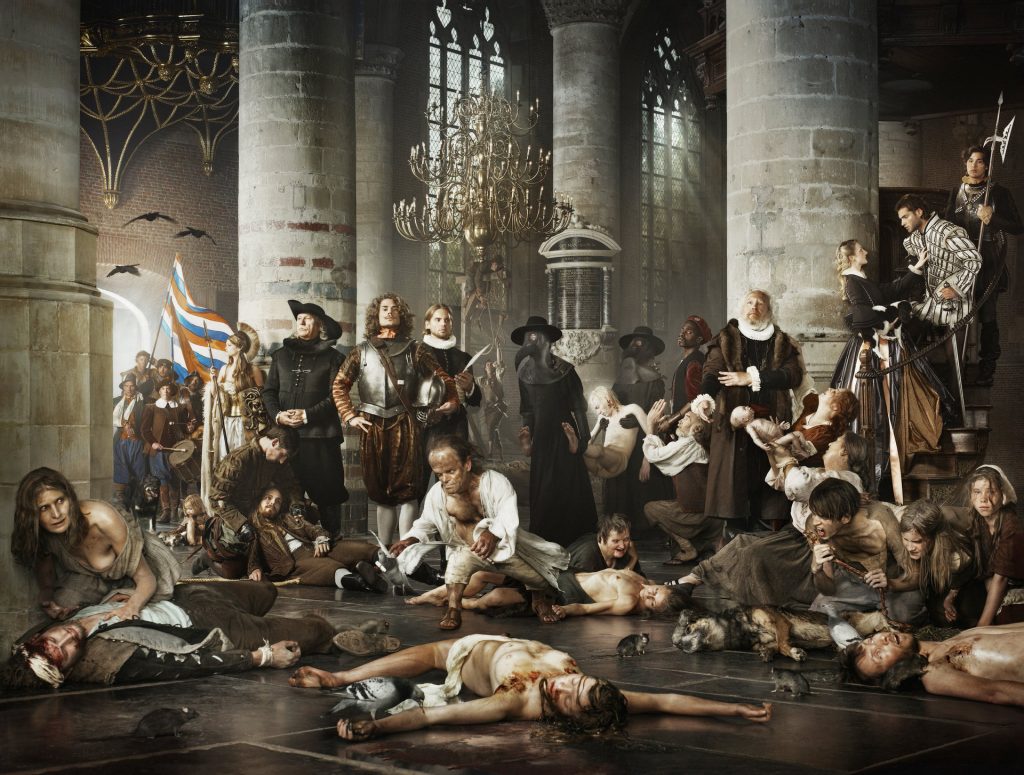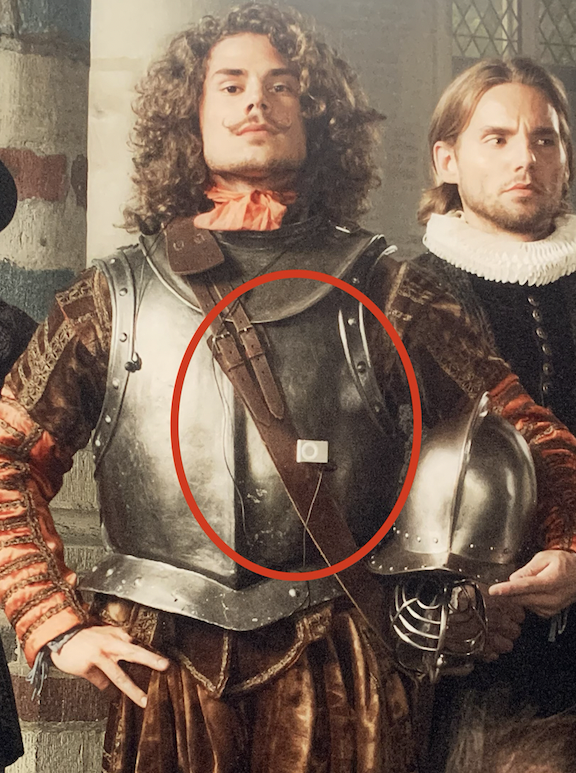Last Tuesday, I took advantage of a free afternoon to visit the De Lakenhal Museum in Leiden. Among the many fascinating works, one piece, in particular, captured my attention: Liberty – pest en honger tijdens Leidens beleg. This artwork, commissioned in 2011 by the University of Leiden and created by the artist-photographer Erwin Olaf, is a depiction of the final days of the Siege of Leiden by the Spaniards, which took place between 1573 and 1574 during the Eighty Years’ War. It primarily focuses on the famine and the pandemic of plague, which claimed the lives of more than 6,000 citizens.

These events unfolded centuries ago, but the scene in the artwork is far from traditional. While the 36 models who posed for the three-day photo session at the Pieterskerk are dressed in historically accurate attire, a few modern elements stand out… can you spot them?
As you may have noticed, an iPod and reading glasses have been integrated into the image. These details serve as a bridge between the past and the present, connecting the traditional with the modern.


The Role of Technology during the Modern Pandemic
Yet, let’s get to the heart of the matter. Truth be told, this artwork made me reflect a lot, taking me back to the time of our recent pandemic. Of course, unless Erwin Olaf had a crystal ball, he couldn’t have foreseen the lockdown of a few years ago, but I found this photograph to be a mirror of our past experiences.
Like many of you, I lived through the pandemic while confined to my home, and my lifeline to the outside world was my phone. The media became a means for me to temporarily escape from the reality of social isolation and anxiety that defined those days.
While I hadn’t fully considered the role of social media during the Covid-19 lockdown, it’s now indisputable that it had a positive effect on many of us. A 2021 study conducted by Verolien Cauberghe, Ini Van Wesenbeeck, Steffi De Jans, Liselot Hudders and Koen Ponnet, revealed that “Using social media to actively face the situation, relieved their feelings of distress and anxiety to some degree, increasing happiness feelings.”
This insight made me reflect on the ways in which technology can also benefit on us. We often tend to focus on the negative effects of new media, perceiving them as tools of isolation. However, the pandemic demonstrated that these technologies allowed us to stay connected, creating virtual communities that protected us from the loneliness we were grappling with.
In a time fraught with uncertainty and fear, it’s as if these media provided me the freedom to step out of the confines of an oppressive space. They served as a reminder that there’s always a bright side to every situation.
Erwin Olaf couldn’t have expected such a strong connection between his work and the reality we experienced. However, it’s intriguing that he integrated these technological elements into a pandemic scenario. Even more incredible is the name of the work itself, ‘Liberty’ …
References
Cauberghe, V., Van Wesenbeeck, I., De Jans, S., Hudders, L., & Ponnet, K. (2021). How adolescents use social media to cope with feelings of loneliness and anxiety during COVID-19 lockdown. Cyberpsychology, Behavior, and Social Networking, 24(4), 250–257. https://repository.uantwerpen.be/docman/irua/bf0b0d/cauberghetextrevision_auteursversie.pdf
Cho, H., Li, P., Ngien, A., Tan, M. G., Chen, A., & Nekmat, E. (2023). The bright and dark sides of social media use during COVID-19 lockdown: Contrasting social media effects through social liability vs. social support. Computers in human behavior, 146, 107795. https://www.ncbi.nlm.nih.gov/pmc/articles/PMC10123536/#bib12
Liberty – pest en honger tijdens Leidens beleg, Museum.nl. https://www.museum.nl/en/museum-de-lakenhal/showpiece/liberty


Recent Comments